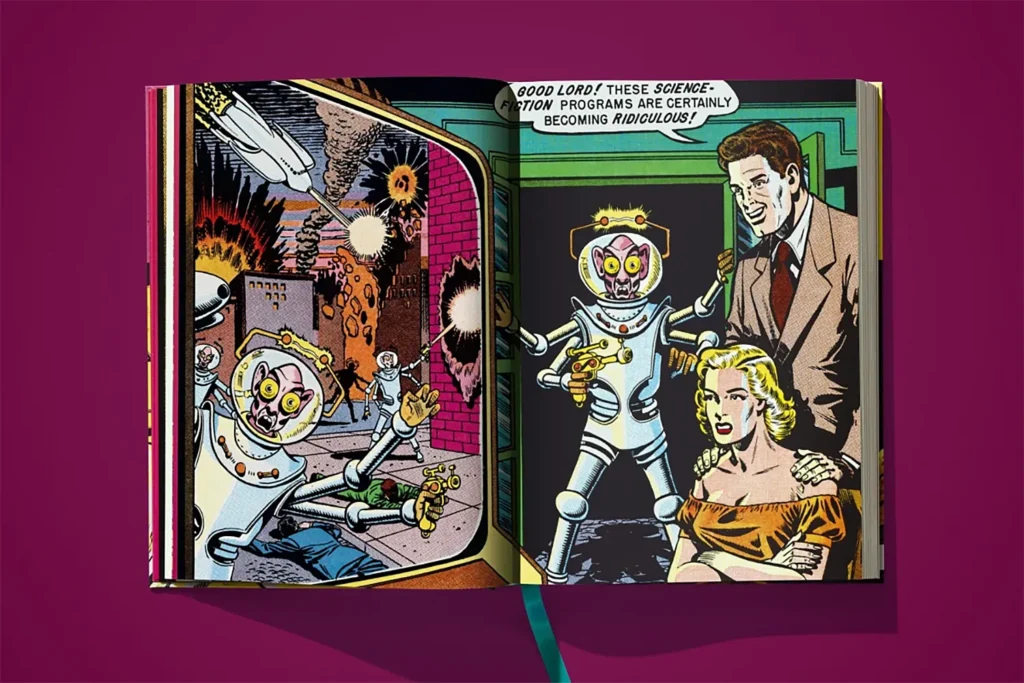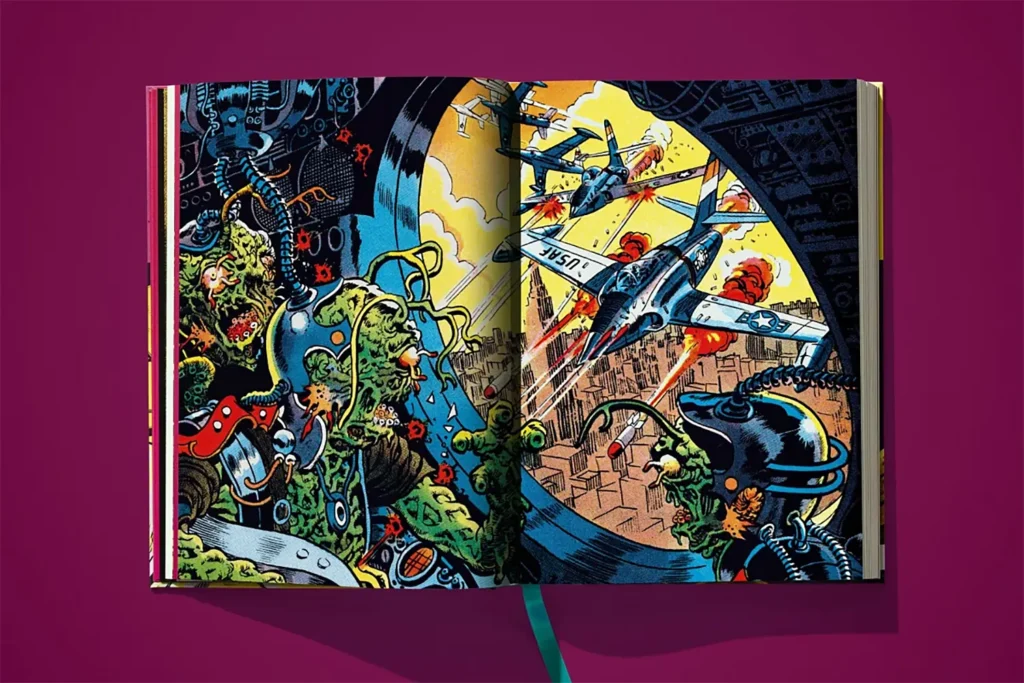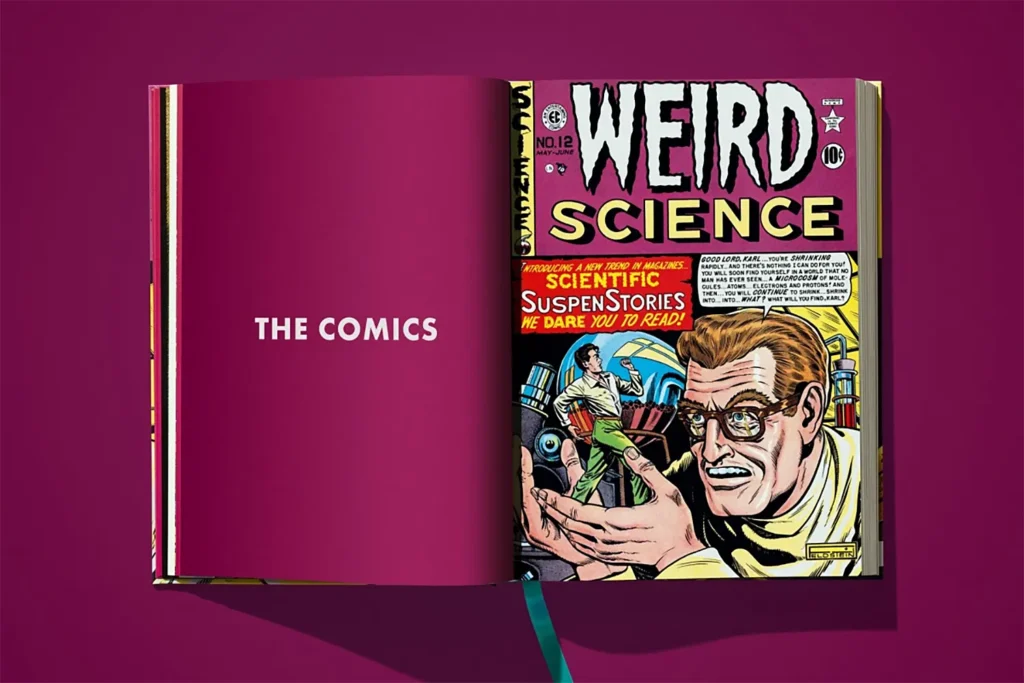New edition of a science fiction comic classic
EC Comics Library: Weird Science Vol. 1 collects the first eleven issues of the legendary science fiction comic from the early 1950s. Edited by Bill Gaines and co-created by Al Feldstein, the volume offers a panorama of stories that differ from the classic adventures à la Flash Gordon. Instead of simple heroic tales, the comics present morally complex and often dark visions of the future – from nuclear catastrophes and alien invasions to time travel with paradoxical consequences. The series reflects the fears and hopes of the dawning nuclear age while offering exciting entertainment with unexpected twists and turns.

© Taschen Verlag
Storytelling between shock and social criticism
A trademark of Weird Science is the mixture of horror, satire and critical examination of the scientific progress of our time. The stories often revolve around moral dilemmas: scientists playing God trigger catastrophes and arrogant space travellers fail due to the unforeseeable consequences of their discoveries. In one episode, a researcher creates a miniature world in the laboratory – only to find that its inhabitants turn against him. In “Lost in the Microcosm”, a protagonist shrinks into ever smaller dimensions – without ever finding an end. These stories are not only entertaining, but also question the limits of human hubris.

© Taschen Verlag
Drawings that shaped an era
The illustrations by artists such as Wally Wood, Joe Orlando and Harvey Kurtzman made Weird Science a style-defining publication. The attention to detail in the drawings is particularly striking: The spaceships look futuristic but believable, and the alien creatures are a far cry from the clichéd “green men” of many other science fiction stories. Many panels are reminiscent of the science fiction pulp covers of the time, with a strong play of light and shadow and dramatic perspectives. It is striking that the illustrators often create a gloomy atmosphere that perfectly matches the often pessimistic endings of the stories.

© Taschen Verlag
A successful collection with nostalgic charm
The new edition presents the comics in a faithful reproduction and is supplemented by an introductory essay by Grant Geissman, who categorises the historical context and the significance of Weird Science. The high-quality print preserves the charm of the original issues without adopting the shortcomings of the production methods of the time. For fans of classic science fiction comics and anyone who wants to understand the influence of these works on modern pop culture, this collection is an impressive time capsule. Some of the stories are predictable from today’s perspective, but their narrative boldness and visual power still make them worth reading.
Data
| Original title | EC Comics Library. Weird Science. Vol. 1 |
| Author | Grant Geissman |
| Publisher | Taschen Verlag |
| Cover | Hardcover |
| Pages | 462 |
| Language | English |
| Dimensions | 28 x 39.5 cm |
| ISBN | 978-3-8365-9733-3 |
| Price | 150 € |
Further information
Further information about the book “EC Comics Library. Weird Science. Vol. 1” (advertising) can be found on the Taschen Verlag website.
Compliance
The book was kindly made available to us by the publisher. The presentation and rating of HYPERMADE remains independent of this and is based solely on the content of the book.











